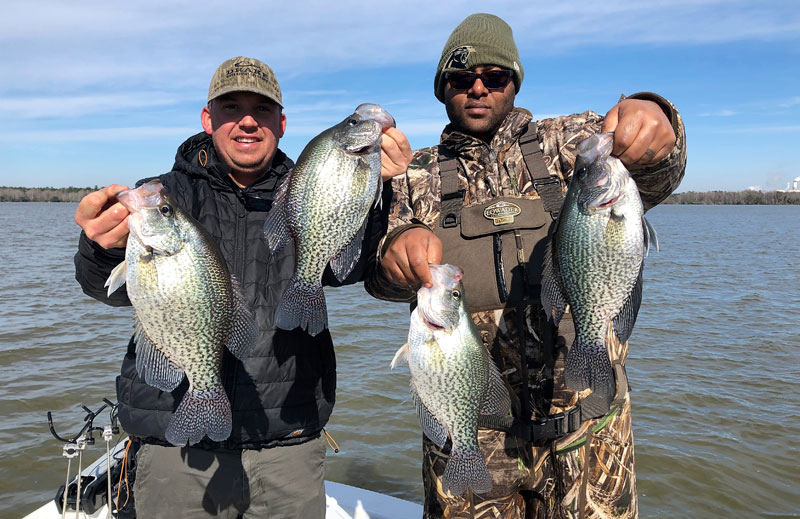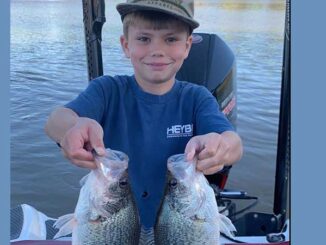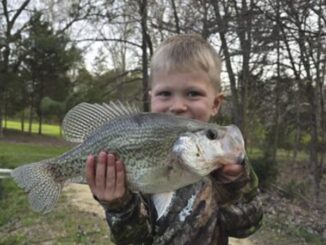
Crappie are already on the move at Santee
Despite Ol’ Man Winter blowing cold air and a few icicles our way in February, a significant change in winter crappie fishing pattern is already underway. By late-January and early February, Santee Cooper’s super slabs are on the move toward shallow water.
TC Lloyd, a crappie guide and tournament fisherman, focuses on Santee Cooper, and Lake Moultrie specifically, in February.
“I crappie fish as much as possible at Santee Cooper in February and March,” Lloyd said. “It’s my most-productive time of the year for slab crappie, especially on Lake Moultrie. Lake Marion is great, too, but fishing peaks later, because Moultrie warms quicker, and the bite begins earlier.”
Lloyd (843-307-6678) said he doesn’t go by a specific water temperature to catch early-season slabs. He begins long-line trolling in late January.
“Water temperature plays a role, but experience has taught me crappie have a biological clock, and the increasing length of days is one trigger for their move towards the shallows,” he said. “I begin fishing in late-January. And by early February, almost overnight, it seems the crappies flood into the creeks and I’m already fishing and can get on a pattern quickly.”
Heading shallow
Lloyd said crappies transition from the deep water of the main lake and move into the creeks and coves. The actual creek boundaries on Lake Moultrie are not as well defined as they are on some Lake Marion creeks such as Taw Caw and Wyboo, with very identifiable borders and channels.
“Crappies move from the deep water into the creeks that course through the flats on Lake Moultrie,” he said. “Using a topographic map and a graph, fishermen can locate creek and ditch runs that crappie use to migrate to the shallows throughout Lake Moultrie.”
Find ‘em, catch ‘em
Lloyd said his favorite method for catching limits of slabs during February is long-line trolling.
“I’ll long-line from six to 10 rigs. And while crappies may be at a specific depth, I keep my fish-finding system simple,” he said. “I search for fish by trolling a variety of jig and grub sizes and colors. I use 6-pound line and vary the length of the rods I use to keep the lines apart as I troll.
He said a good example would be staggering 14-, 12-, 10- and 8-foot-long rods on each side of the boat and shorter rods directly off the back. That provides a wide coverage area while keeping the rigs spread apart, making it easier to reel fish in without tangling.
Size up your jigs for winter crappie
Lloyd’s preferred jig sizes include 1/8-, 1/16-, 1/32- and 1/48-ounce in varying colors. He prefers a Jenko curly fry grub and said lots of colors will work. Black/chartreuse, red/blue and most solid colors with a chartreuse tail make excellent choices. He occasionally tips the rig with a live minnow.
“If adding a minnow helps, go with it,” he said.
“I cast the rigs a long cast behind the boat and will constantly vary my speed between 0.6 and 1.2 miles per hour until I find the pattern,” he said. “Staggering the speed, along with different sizes of jigheads, enables me to cover a large portion of the water column until I discover the key for the day.
“Heavier jigs trolled slower go deeper. And lighter jigs and faster speeds mean shallower fishing. The most-productive trolling speed coupled with a specific jighead size and color on a given day is a simple formula for success.”
Predict Patterns
Productive patterns vary with the weather. Warm, overcast days are prime for crappies to move shallower. A couple of warm, sunny days may pull the fish up surprisingly shallow onto the flats, Lloyd said. Likewise, a cold front may cause crappies to retreat toward the mouth of the creek and perhaps deeper near the bottom of the water column.
“No magic formula exists covering all scenarios, but the more you long-line troll, the better you can predict what’s happening and make quick adjustments,” Lloyd said.
“Most of the time in February and March, crappies will be in open water and suspended,” he said. “After a couple warm days, they may be found in 5 to 10 feet of water, suspended over 20 feet of water. If it’s colder they may be suspended in 12 to 15 feet deep over 30 feet of water.”
Lloyd said long-line trolling is not difficult, but anglers need to be methodical in eliminating unproductive water and make mental notes on what’s working. And keep multiple rigs fishing in that productive zone.
During February the payback is well worth the effort, he said.
“Once on a strong pattern, by culling smaller fish, it’s not unusual to have multiple 2-pound-plus crappies in your limit,” he said. “February is my favorite time of the year for limits of slabs on Santee Cooper.”





Be the first to comment